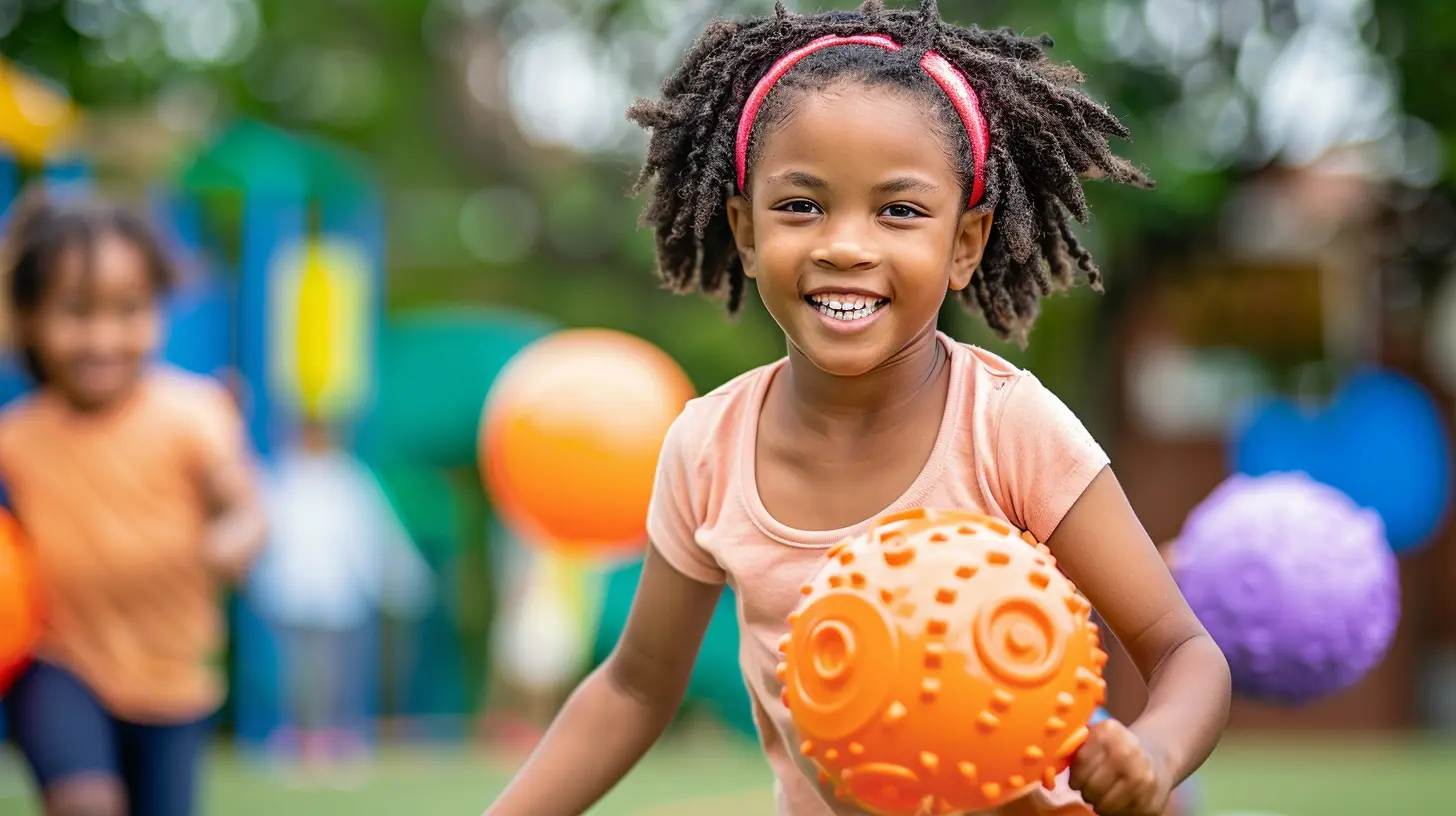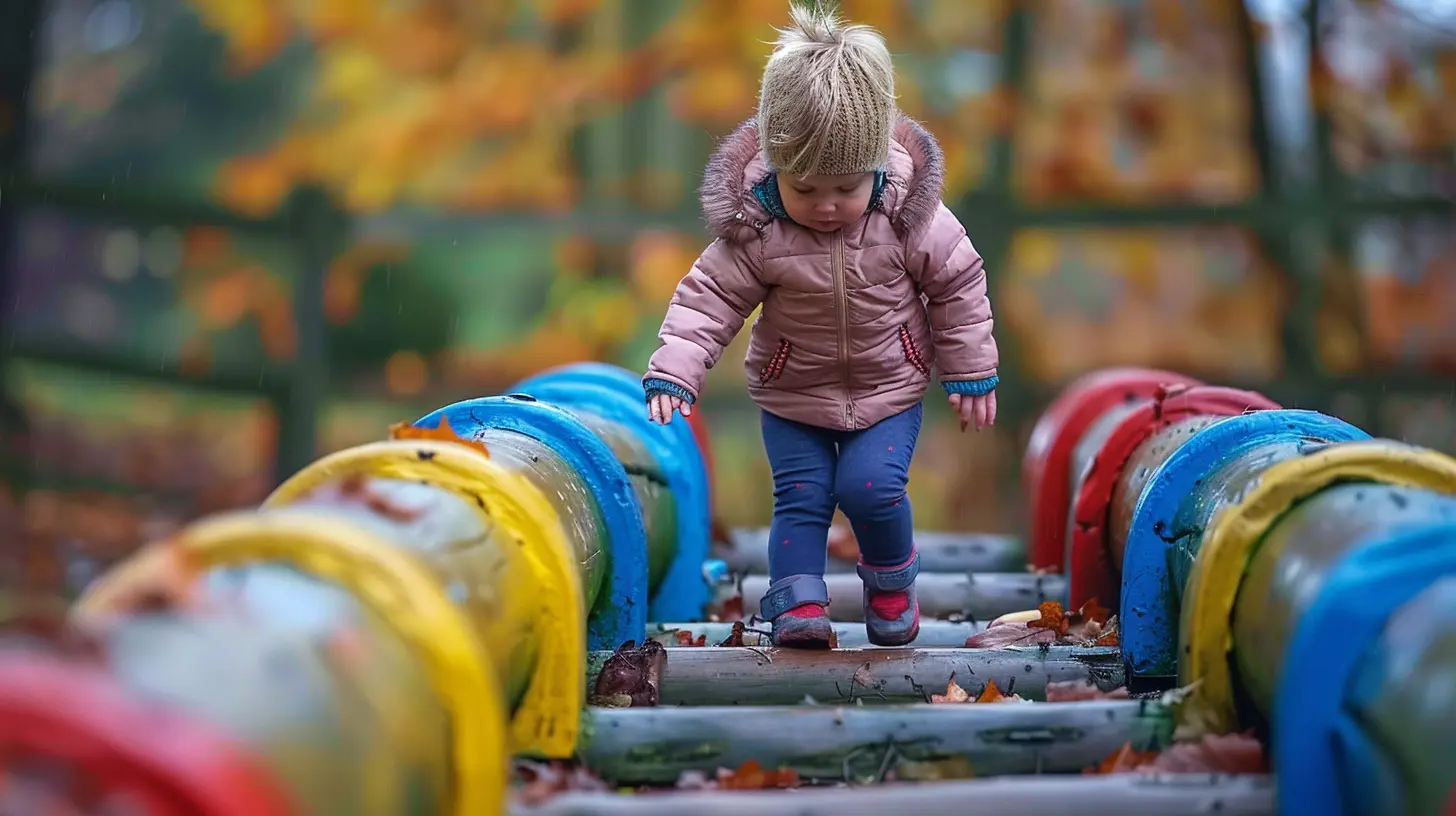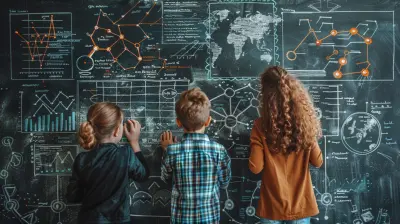The Link Between Physical Activity and Cognitive Development in Children
16 November 2025
Let’s be honest—when we think of physical activity for kids, we usually picture them running around at recess, kicking a soccer ball, or playing tag until they’re out of breath and red in the face. But what if I told you those sweaty, giggly moments are doing more than just tiring them out for bedtime? Yep, science is loud and clear about it: regular physical activity plays a huge role in shaping a child’s brain and boosting their cognitive development.
In this blog post, we're diving deep into how movement affects the mind. From improving memory to sharpening focus, physical activity isn't just good for the body—it's fuel for the brain.
Why Physical Activity Is More Than Just Play
You might think running around is just a way for kids to burn off energy. But it’s way more than that. Think of exercise like a power-up in a video game—it boosts brain function, making kids sharper, faster, and more focused.When kids get moving, their brains get a rush of oxygen and nutrients. This increased blood flow enhances neural activity, creating stronger brain connections. In simple terms? Moving the body literally builds a better brain.
The Science Behind the Brain-Body Connection
So, how does all this awesome stuff actually happen in the brain? Well, here’s the lowdown:1. Boosting Brain-Derived Neurotrophic Factor (BDNF)
Okay, that sounds fancy, but stick with me. BDNF is a protein known as the “Miracle-Gro” for the brain. Physical activity ramps up the production of BDNF, helping neurons grow and connect. These connections are critical for learning, memory, and overall cognitive performance.2. Better Blood Flow, Better Focus
Think of blood as the brain’s delivery service. When kids are physically active, their heart pumps more blood—and that blood carries oxygen and glucose right to the brain. That’s the energy the brain needs to stay alert and focused. More blood flow = more brainpower.3. Hormones Get a Healthy Shake-Up
Physical activity reduces stress hormones like cortisol and triggers the release of feel-good chemicals like endorphins and dopamine. These mood-boosters aren't just for happiness—they help with attention, memory, and motivation, too.
How Physical Activity Enhances Cognitive Skills
Let’s break it down even more. Here’s exactly how getting active boosts those brainy skills:🔹 Improved Memory
Regular exercise has been shown to increase the size of the hippocampus—aka the part of the brain that handles memory and learning. So, when your child goes for a bike ride or plays a game of chase, they’re actually making it easier for them to remember things later on.🔹 Enhanced Attention and Focus
Ever noticed how kids have a hard time sitting still in class? That’s because their bodies are wired to move. Giving them structured outlets for activity (like PE or sports) helps them concentrate better during lessons. Physical activity boosts the brain’s executive function—critical for tasks like organizing, planning, and staying on track.🔹 Faster Information Processing
Exercise helps speed up the brain’s ability to process information. It's like upgrading the processor on your smartphone—faster, smoother, and more efficient. This means better reaction times, quicker thinking, and improved decision-making in both academic and social situations.
Age Matters: How Activity Affects Different Stages of Development
Not all age groups benefit from exercise in the same way. Let’s take a look at how movement supports brain development at various stages:🔸 Early Childhood (Ages 3–6)
At this age, movement is essential for brain development. Activities like jumping, climbing, and dancing stimulate the development of motor skills and help create brain connections related to spatial awareness, language, and emotion regulation.🔸 Middle Childhood (Ages 7–12)
This is when kids start getting more structured education. Physical activity supports cognitive flexibility, memory recall, and attentional control—skills that can directly impact classroom performance.🔸 Adolescence (Ages 13–18)
Teen brains are in a whirlwind of change. Regular exercise helps reduce anxiety and depression while promoting better sleep and learning. It can also support the development of abstract thinking and complex problem-solving.Types of Activities That Support Brain Development
All movement is good, but some types of physical activity offer special brain benefits. Take a look at these:✅ Aerobic Exercises
Running, biking, swimming, or even a good old-fashioned game of tag. These high-energy activities increase heart rate and blood flow, fueling the brain with oxygen and nutrients.✅ Coordination-Based Activities
Think martial arts, dance, or ball games. These challenge the brain to coordinate movement, timing, and spatial awareness—enhancing connections between different parts of the brain.✅ Strength and Flexibility Training
Activities like yoga or climbing not only build muscle but also promote concentration and body awareness, which boost mindfulness and stress management.✅ Free Play
Don't underestimate the power of unstructured play. It encourages creativity, problem-solving, and social interaction—key components of cognitive development.How Schools Play a Role in Physical-Cognitive Health
Let’s face it—kids spend a big chunk of their day at school. So, schools have a massive role to play in promoting physical activity. And no, that doesn’t just mean a half-hour PE class once a week.Here's what schools can do:
- Incorporate movement into daily lessons (Think: standing desks or movement breaks)
- Extend recess and outdoor time
- Encourage active learning through games and physical challenges
- Offer a diverse range of extracurricular sports and physical clubs
When schools prioritize movement, they’re not just helping kids stay fit—they’re giving their brains the tools to succeed academically.
Does Physical Activity Boost Academic Performance?
Short answer: Yup. Kids who move more do better in school.Studies have consistently shown that students who engage in regular physical activity show better grades, improved concentration, and better behavior in the classroom. Movement increases alertness and helps with memory retention—making it easier for kids to absorb new information.
Plus, active students tend to have higher self-esteem and better social skills, which helps them navigate the social side of school, too.
The Role of Parents at Home
Physical activity shouldn’t stop at the school gates. What kids do at home matters just as much. As a parent, you're the first role model they look to. If they see you being active, they’re more likely to follow suit.Here’s how you can support cognitive development through activity:
- Take family walks or bike rides
- Limit screen time and encourage outdoor play
- Sign kids up for local sports or dance classes
- Set up a “movement corner” at home with jump ropes, balls, and hula hoops
It doesn't have to be fancy or expensive—just get them moving.
Barriers to Physical Activity & How to Overcome Them
Let’s be real. Not every child has equal access to safe spaces for play or sports programs. Some kids might struggle with physical limitations or lack of motivation. But there are ways to work around this:- Lack of Access? Check out community centers or free online fitness videos.
- Physical Limitations? Focus on low-impact activities like swimming or yoga.
- Lack of Motivation? Make it social. Invite friends or use fun challenges or rewards.
- Too Much Screen Time? Set limits and schedule physical activity into the daily routine.
It’s all about making movement a regular and enjoyable part of life.
Practical Tips to Encourage More Movement
Here are easy, actionable ideas you can try today:1. Start the day with 10 minutes of stretching or dancing.
2. Use a timer to break up homework or screen time with movement breaks.
3. Make chores fun—turn tidying up into a dance party!
4. Walk or bike instead of driving when possible.
5. Turn commercial breaks into mini workout sessions.
Small steps can lead to big brain boosts.
Final Thoughts: Movement Is the Mind's Best Friend
When it comes to helping your kids perform better in school—and life—physical activity is a secret weapon. It’s not just a “nice-to-have,” it’s a “must-have.” The connection between movement and mental growth is undeniable.So next time your child begs to go outside and play, don't just say yes—cheer them on. Their brain will thank you later.
all images in this post were generated using AI tools
Category:
Educational PsychologyAuthor:

Eva Barker
Discussion
rate this article
1 comments
Yvette Sharp
This article effectively highlights the critical connection between physical activity and cognitive development in children. It underscores how regular exercise not only enhances physical health but also boosts brain function, improving focus, memory, and overall academic performance. This evidence-based perspective encourages educators and parents to prioritize active play in children's daily routines.
November 16, 2025 at 3:46 AM


